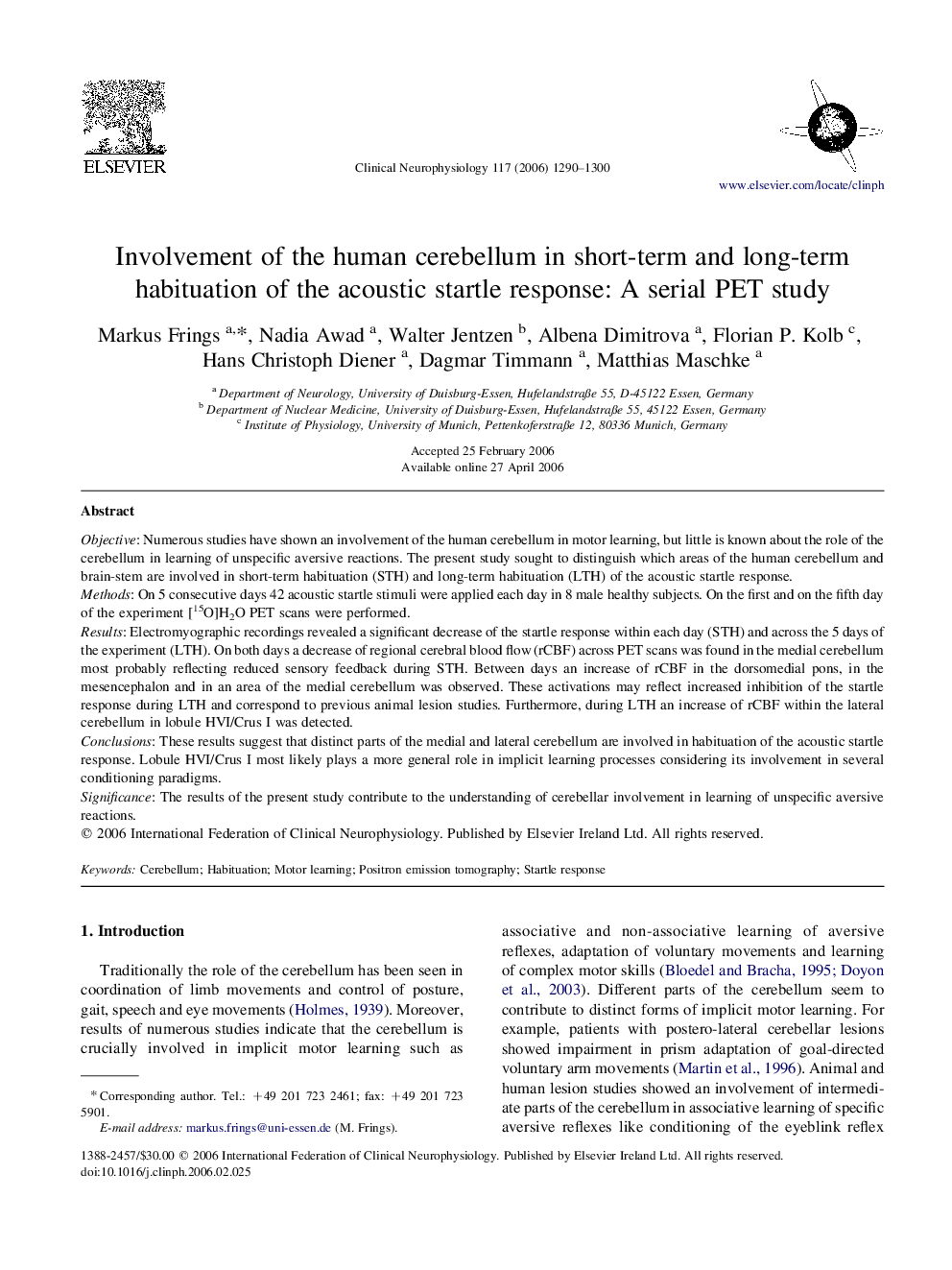| Article ID | Journal | Published Year | Pages | File Type |
|---|---|---|---|---|
| 3048738 | Clinical Neurophysiology | 2006 | 11 Pages |
ObjectiveNumerous studies have shown an involvement of the human cerebellum in motor learning, but little is known about the role of the cerebellum in learning of unspecific aversive reactions. The present study sought to distinguish which areas of the human cerebellum and brain-stem are involved in short-term habituation (STH) and long-term habituation (LTH) of the acoustic startle response.MethodsOn 5 consecutive days 42 acoustic startle stimuli were applied each day in 8 male healthy subjects. On the first and on the fifth day of the experiment [15O]H2O PET scans were performed.ResultsElectromyographic recordings revealed a significant decrease of the startle response within each day (STH) and across the 5 days of the experiment (LTH). On both days a decrease of regional cerebral blood flow (rCBF) across PET scans was found in the medial cerebellum most probably reflecting reduced sensory feedback during STH. Between days an increase of rCBF in the dorsomedial pons, in the mesencephalon and in an area of the medial cerebellum was observed. These activations may reflect increased inhibition of the startle response during LTH and correspond to previous animal lesion studies. Furthermore, during LTH an increase of rCBF within the lateral cerebellum in lobule HVI/Crus I was detected.ConclusionsThese results suggest that distinct parts of the medial and lateral cerebellum are involved in habituation of the acoustic startle response. Lobule HVI/Crus I most likely plays a more general role in implicit learning processes considering its involvement in several conditioning paradigms.SignificanceThe results of the present study contribute to the understanding of cerebellar involvement in learning of unspecific aversive reactions.
